Planning visiting the Philippines this year? The Philippines is a country of stunning contrasts—remote turquoise islands, jungle-covered mountains, coral-rich waters, and warm, welcoming locals. But compared to other Southeast Asian destinations like Thailand or Bali, traveling in the Philippines can require more planning, flexibility, and patience. It’s not always straightforward, but the reward is a deeply authentic and breathtaking adventure across 7,000+ islands.
From navigating its unique transport systems to understanding visa policies and regional climates, there are a number of details that aren’t always obvious until you land. That’s why we’ve created this in-depth guide to help you travel smarter. Whether you’re backpacking on a budget or splurging on a beach villa, these tips will help you avoid common mistakes and maximize your time in this island nation.
Below are 15 things you’ll be glad you knew before exploring the Philippines in 2025—from when to go and what to pack to how to save money and where to island-hop like a pro.
-
8 Truth About Travel Influencers: How They Fake Luxury Vacations
In an age where Instagram likes can buy you fame and TikTok views can make you rich, the rise of the travel…
Things to Know before Visiting the Philippines
1. When to Visit the Philippines: Dry Season vs. Wet Season
Timing your trip to the Philippines is crucial, especially since the country experiences distinct dry and wet seasons that vary by region. Generally, the best time to visit is between December and April, which is considered the dry season. This is when you’ll enjoy plenty of sunshine, calm seas, and optimal conditions for island-hopping, snorkeling, and outdoor adventures.

However, not all islands follow the same weather patterns. For instance, Siargao, a surfing haven in the southeast, has a slightly different dry season that typically runs from March to October. If you’re planning to surf, this period aligns with the island’s peak wave season. Be sure to research the weather for each destination individually—what’s dry and breezy in Palawan might be wet and stormy in Bohol.
This is a must for you if you plan Visiting the Philippines. Keep in mind that the dry season also coincides with the peak travel season. Expect higher prices on flights and accommodations, especially around holidays like Christmas and Easter. Booking in advance is highly recommended during this period to avoid sold-out tours and inflated rates.
If you’re on a tighter budget or prefer fewer crowds, consider visiting during the shoulder months of May and November. You’ll still catch good weather, and tours are generally easier to book on the fly. Just be prepared for sudden afternoon showers, especially in more tropical regions.
2. How to Get Around the Philippines: Unique Local Transport
Getting around the Philippines is part of the adventure—but it’s not as seamless as in countries like Thailand or Vietnam. With over 7,000 islands, your journey will likely involve a combination of ferries, domestic flights, buses, and local transport options. The logistics can be a challenge, but knowing your options ahead of time will help you move more efficiently.
On land, you’ll find quirky and affordable modes of local transport. Jeepneys are the most iconic—colorful, open-air minibuses originally made from U.S. military jeeps. They’re cheap and everywhere, but figuring out their routes can be confusing for first-timers. Ask locals or the driver directly—they’re often more than willing to help.
Other common options include tricycles and habal-habal (motorbike taxis). These are great for short distances, like getting from your guesthouse to a nearby beach or village. Prices are negotiable, so it’s wise to ask locals what a fair rate is before hopping on. In cities like Manila and Cebu, you can also use the Grab app (Southeast Asia’s version of Uber) for convenient and reliable rides.

When traveling between islands, you’ll need to use ferries or short domestic flights. While flights are faster and more comfortable, they’re often more expensive and subject to delays. Ferries are budget-friendly but can be slow and sometimes bumpy, especially during the rainy season. Planning your route carefully—and allowing extra time for transfers—is essential to keeping your trip stress-free.
Keep this in mind when visiting the Philippines.
3. Filipino People Are Exceptionally Friendly—and They Speak Great English
Another thing to note when visiting the Philippines is one of the most delightful surprises for travelers in the Philippines is the genuine warmth and hospitality of the locals. Filipinos are incredibly kind, generous, and helpful, often going out of their way to assist travelers—even if you don’t ask for help. This cultural trait, known locally as hospitality, is deeply ingrained and adds so much richness to your travel experience.
Another major plus is the widespread fluency in English. Unlike many neighboring countries, English is one of the Philippines’ official languages and is taught from a young age in schools. This means that travelers can communicate with ease in most situations—whether you’re asking for directions, ordering food, or chatting with your hostel staff.
Even in smaller towns and remote islands, you’ll find locals—especially children and young adults—who are eager to practice their English. Don’t be surprised if someone starts a conversation just to ask where you’re from or what you think of the Philippines. These interactions are often some of the most memorable parts of the journey.
The ease of communication also makes navigating the country far less stressful for solo travelers or first-time visitors. It allows for deeper cultural exchange and makes it easier to understand local customs, safety tips, and practical info. In short, you’ll rarely feel lost or isolated in the Philippines, even when you’re far from the usual tourist path.
4. Don’t Spend Too Long in Manila or Cebu
While Manila and Cebu are key international and domestic gateways, they’re not the main attractions of the Philippines. These bustling cities can be intense—crowded streets, heavy traffic, and a fast-paced urban vibe that contrasts sharply with the laid-back island lifestyle you came for. While each city has its own points of interest, most travelers find that a short stay is more than enough.
Manila offers some cultural and historical sights like Intramuros, Rizal Park, and a growing art and nightlife scene. Cebu City has easier access to island adventures and natural attractions like Kawasan Falls and Osmeña Peak, but the city itself is more of a launching pad than a destination. Traffic congestion can be overwhelming, and air pollution is a common complaint.

That said, both cities serve an important purpose in your itinerary. They’re central hubs for domestic flights and ferries, so chances are you’ll pass through them more than once. Take the opportunity to rest, restock, and recharge—but try not to linger if you’re short on time.
If you’re curious, 1–2 nights is usually enough to sample some local food, adjust to the time zone, and get your bearings before heading off to more scenic and relaxed parts of the country like Palawan, Siargao, or Bohol.
5. Get a SIM Card or eSIM for Reliable Internet
You want to stay connected when visiting the Philippines right? Staying connected in the Philippines can be hit or miss depending on your location—but having a local SIM card or eSIM makes a huge difference. The two main providers are Globe and Smart, and both offer competitive data plans. Smart is generally praised for better coverage in remote areas and islands, making it a favorite for travelers exploring beyond major cities.
You can purchase a SIM card right at the airport upon arrival or from local convenience stores and mobile shops. Setup is usually quick and easy—you’ll just need to present your passport for registration. Prepaid data packages are very affordable, and you can top up online or via mobile apps. Plans often include generous gigabyte allowances for just a few dollars.
If you prefer a contactless setup, consider using an eSIM service like Airalo or Nomad. These services allow you to download a digital SIM to your phone before arriving, giving you instant internet access once you land. It’s a convenient option, especially if you’re hopping between countries on a longer Southeast Asia trip.
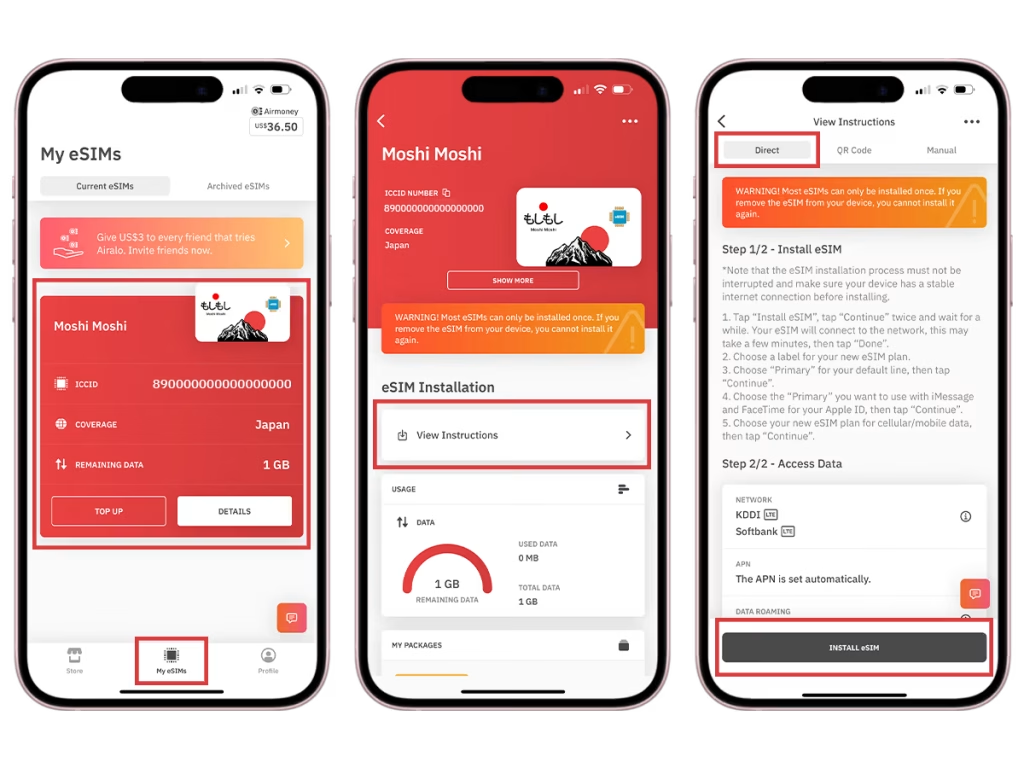
Having reliable internet is important not just for maps and translation, but also for booking transport, accessing digital tickets, checking ferry schedules, and staying in touch with tour operators. With the right SIM or eSIM, you’ll stay connected, informed, and in control of your journey.
6. Getting Around the Islands: Flights vs. Ferries
Plan visiting the Philippines? You must know they have one of the most islands in Asia. With over 7,000 islands, the Philippines requires travelers to think beyond buses and trains. Long-distance overland travel often involves domestic flights or ferries, and knowing when to use each can save you time, money, and a lot of frustration. While the fragmented geography is part of the Philippines’ charm, it does make logistics a little trickier.
Flights are the fastest and most comfortable option when traveling between major islands or distant provinces. Airlines like Cebu Pacific, Philippine Airlines, and AirAsia offer frequent domestic flights, and prices can be affordable if booked in advance. Just keep in mind that delays are common, so give yourself buffer time if you’re making connections or planning activities on arrival.
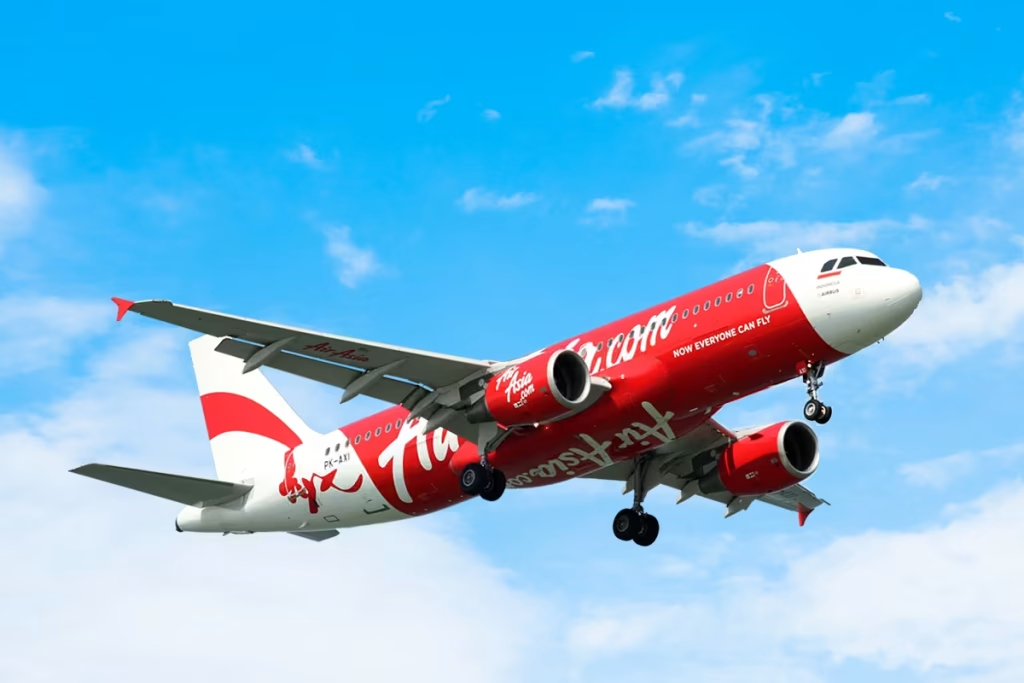
Ferries are the budget-friendly alternative and offer a more local experience. Companies like 2GO Travel and OceanJet operate routes between key islands like Cebu, Bohol, Siquijor, and Palawan. While they’re cheaper than flying, ferries can be long, slow, and not always the most comfortable—especially in bad weather. If you’re prone to seasickness, be prepared.
In some areas, you’ll need to buy ferry tickets in person at the port or through a travel agency a day in advance. Online platforms like Bookaway.com or 12Go Asia now offer ferry and bus bookings, which can save time and uncertainty. Always double-check the departure port and arrive early—boarding can be chaotic, and schedules change frequently.
7. Booking Transport Isn’t Always Straightforward
Unlike Thailand or Vietnam, where you can walk into almost any guesthouse and book a van, ferry, or tour with ease, the Philippines often requires more effort when arranging transportation. The country’s infrastructure is still developing, and island-hopping means coordinating a mix of ferries, buses, tricycles, and flights—which don’t always run on schedule or sync up with each other. Keep this in mind visiting the Philippines

For ferries and buses, you’ll often need to go directly to the terminal or port to buy your ticket in person—sometimes even a day or two in advance. Online booking isn’t always available, especially for local routes. Some operators only accept cash, and the process can vary by region. Don’t expect to hop on a ferry just by showing up last minute like you might in Europe.
That said, digital booking platforms like Bookaway, 12Go Asia, and Klook are starting to improve the experience. These websites allow you to reserve buses, ferries, and even private transfers ahead of time, often using your credit card. They’re a reliable option for securing longer routes or popular crossings during peak season. Use any of the 3 platforms when visiting the Philippines
The best approach? Be flexible, ask your accommodation for help, and don’t wait until the last minute to plan your transfers—especially if you’re on a tight schedule or trying to catch a flight. A little proactive research goes a long way in keeping your journey smooth and stress-free.
8. Budgeting: It’s Pricier Than You Might Expect
The Philippines is often lumped together with other Southeast Asian countries when it comes to affordability—but it’s not always as cheap as Thailand, Vietnam, or Laos. While you can definitely travel on a budget, the lack of efficient public transport, higher food costs, and expensive activities mean you’ll need to plan more carefully to avoid blowing your budget.

A realistic daily budget for backpackers is around £30 or $35–$40 USD, especially if you’re doing lots of island-hopping and adventurous tours like canyoneering, diving, or whale shark encounters. Many of the most memorable activities here are not free—and the cost of getting to them adds up quickly, particularly when ferries and flights are involved. This is a must since you plan visiting the Philippines
Another expense to consider is food. Unlike Thailand or Vietnam, the Philippines doesn’t have a big street food culture. While local karinderyas (small eateries) offer affordable Filipino meals, most travelers gravitate toward Western-style cafes and restaurants, especially in tourist towns. These meals often cost 2–3 times more than local dishes.
To stretch your budget, eat local when you can, travel in groups to split transport costs, and prioritize free or low-cost activities like hiking, snorkeling, and beachcombing. Staying in hostels or pension houses (guesthouses) rather than hotels can also help you stay under budget without sacrificing comfort.
9. Ethical Travel: Say No to Whale Shark Tourism in Oslob
Swimming with whale sharks is one of the most popular activities in the Philippines—but not all experiences are created equal. In Oslob, on the island of Cebu, whale sharks are fed daily to keep them in one spot for tourists to swim with. While it may seem like an incredible opportunity, the reality is that this practice is harmful to the animals and the environment. Don’t do this as you plan visiting the Philippines

Feeding disrupts the whale sharks’ natural migration patterns and makes them dependent on humans. They often spend hours floating vertically at the surface, mouths open for food, which is not natural behavior. This puts them at risk of injury from boats and increases their exposure to pollutants. Conservation groups and marine biologists strongly discourage supporting this form of tourism.
If you truly want to swim with whale sharks responsibly, look into more ethical alternatives. In Donsol (Luzon) or Leyte, for example, whale shark encounters are regulated and do not involve feeding. These tours are more seasonal and less predictable—but they respect the natural movement and behavior of the animals.
Being a responsible traveler means choosing experiences that protect the wildlife and communities you visit. Skip the selfie in Oslob and instead support eco-friendly operations that prioritize marine conservation and education. You’ll have a more meaningful, guilt-free experience—and help preserve the Philippines’ biodiversity for future generations.
10. It’s One of the Best Countries in the World for Diving
If you’re a diver—or even curious about trying—it’s hard to beat the Philippines. With over 7,000 islands and some of the most biodiverse coral reefs on Earth, this country is a paradise for underwater explorers. From colorful reef systems to historic wrecks and rare marine species, diving in the Philippines is a world-class experience at a fraction of the cost you’d pay in places like Australia or the Maldives.
Some of the top diving spots include Coron, where you can explore eerie WWII shipwrecks; Apo Island, famous for vibrant coral gardens and sea turtles; and Tubbataha Reefs, a UNESCO World Heritage Site accessible by liveaboard boat. Moalboal in Cebu is known for the iconic sardine run, where millions of fish swim in swirling schools just meters from shore. Even non-divers can snorkel and get a taste of the action.
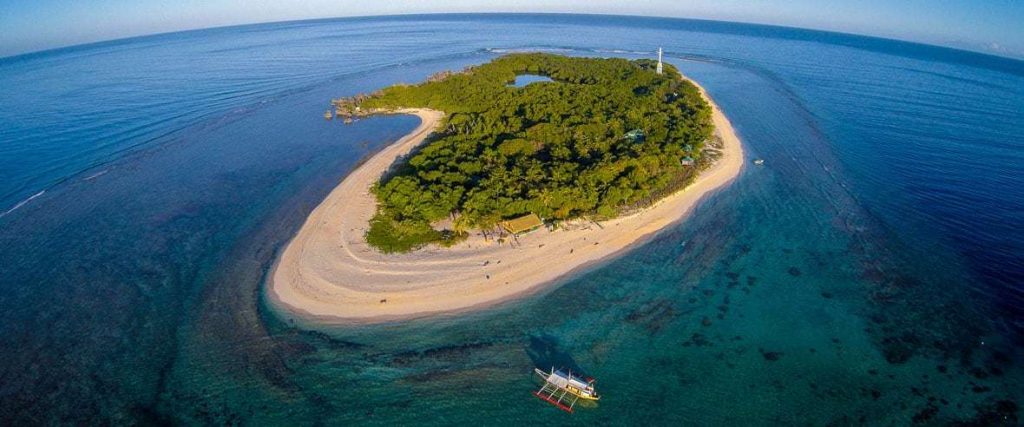
Prices for a single fun dive generally range from $25 to $40 USD, depending on the location and dive shop. PADI certification courses are also widely available and relatively affordable, making the Philippines an ideal place to get your Open Water certification if you’re a beginner. As you plan visiting the Philippines, this is one of the cheapest activity you can do
Most dive centers are safety-focused, well-organized, and environmentally conscious. That said, it’s always a good idea to read reviews, ask about group sizes, and confirm that they follow proper conservation practices. Whether you’re diving daily or just want to snorkel from a boat, the underwater magic of the Philippines is something you’ll never forget.
11. Don’t Skip the Lesser-Known Islands
A you plan visiting the Philippines, places like El Nido, Coron, and Siargao wil surely get most of the attention—and for good reason—some of the Philippines’ most rewarding experiences are found on its lesser-known islands. If you’re willing to stray from the typical tourist trail, you’ll be rewarded with untouched beaches, authentic village life, and peaceful nature far from the crowds.
Take Siquijor, for instance—a mystical island known for waterfalls, fireflies, and ancient healing traditions. Or explore Camiguin, a volcanic island dotted with hot springs and sunken cemeteries. Bantayan Island in the north of Cebu offers powdery white sand and a tranquil vibe without the high prices of Palawan. And then there’s Batanes, in the far north, with its rolling hills, stone houses, and a vibe more like New Zealand than Southeast Asia.
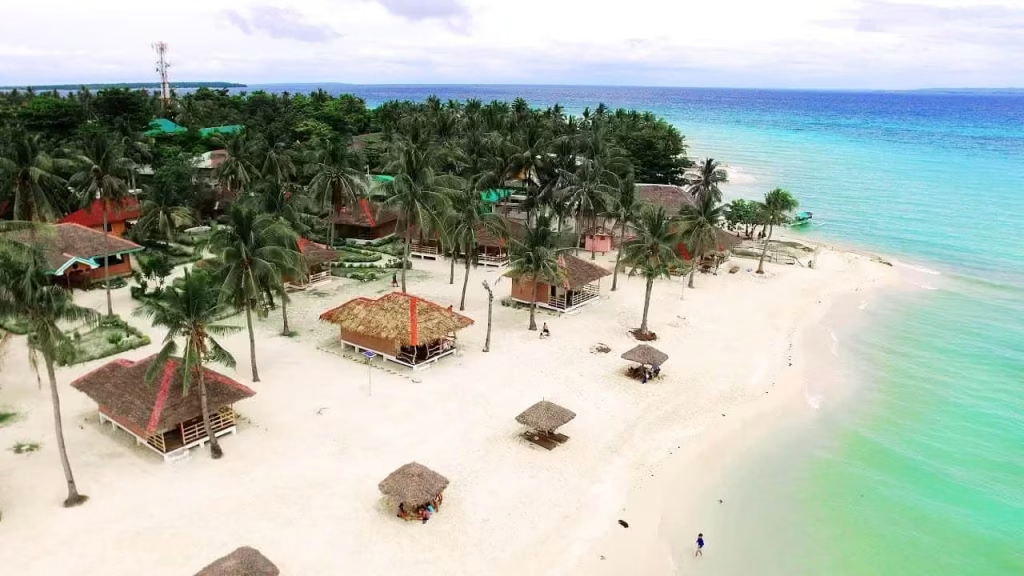
These hidden gems offer not just beauty but authenticity. You’ll often interact more closely with locals, support small-scale tourism, and experience Filipino culture in a way that’s increasingly rare in heavily visited destinations. Accommodation may be simpler and transport trickier, but that’s part of the charm.
Traveling to lesser-known islands does require more patience and planning—fewer ferry connections, fewer tour options, and limited internet in some areas—but for those seeking a deeper, more soulful journey, it’s absolutely worth it.
12. Pack Light—but Smart
When visiting the Philippines, packing light isn’t just a suggestion—it’s almost a necessity. With frequent ferry rides, van transfers, and island-hopping tours, you’ll thank yourself for choosing a backpack over a bulky suitcase. You’ll be lifting your bag on and off boats, navigating uneven roads, and possibly trekking through rain and mud—especially in more remote areas.
Lightweight, quick-drying clothing is key. Pack breathable fabrics that handle sweat and humidity well, along with swimwear, sandals or water shoes, and a light rain jacket. If you’re planning hikes or volcano climbs, bring sturdy sneakers or trail shoes. Don’t forget reef-safe sunscreen, insect repellent, and a dry bag to protect your electronics during island-hopping tours.
It’s also wise to carry a small first aid kit, as pharmacies can be limited on smaller islands. Bring any prescription medications you need, as well as essentials like motion sickness tablets, antihistamines, and rehydration salts. If you’re traveling with tech gear, a universal adapter and power bank are essential—power outages do happen, especially during storms.
Keep your daypack well-organized with items like a reusable water bottle, sarong or travel towel, sunglasses, and a waterproof phone pouch. Traveling light doesn’t mean sacrificing comfort—it means staying agile, efficient, and always ready for your next boat ride or mountain hike.
13. Filipino Food Is Simple, Comforting, and Heavily Meaty
Filipino cuisine doesn’t always get the global recognition it deserves, but it offers a hearty and deeply cultural experience. That said, if you’re expecting the spice and flair of Thai or Vietnamese food, you might be surprised—Filipino food tends to be simpler, meat-forward, and centered around salty, sour, and sweet flavors. It’s a cuisine rooted in comfort and community, rather than complexity.
Make sure you try the Filipino food when visiting the Philippines.
Some staple dishes to try include adobo (chicken or pork stewed in soy sauce and vinegar), sinigang (a sour tamarind soup), and lechon (roasted pig, often served at festivals). Rice is served with just about everything, and local breakfast dishes like silog (fried rice, egg, and a protein) are both affordable and filling. Portions are usually generous, and meals are best enjoyed in groups.

That said, vegetarians and vegans might find it challenging to navigate menus, especially in small towns and local eateries (karinderyas). Many traditional dishes are centered on meat or seafood, and vegetables are often cooked with pork broth or shrimp paste. If you have dietary restrictions, it’s a good idea to learn a few key phrases or dine at Western-style or health-conscious cafes, which are more common in places like Siargao, Cebu, or El Nido.
Read: Top 10 French Foods You Absolutely Must Try in Paris
If you’re adventurous, try balut (a fertilized duck egg) or isaw (grilled chicken intestines), which are popular street snacks. But even if you stick to safe staples, you’ll find plenty of comfort food to enjoy. It’s a cuisine that reflects the resourcefulness, hospitality, and history of the Filipino people—and a big part of the cultural experience.
14. Tipping Culture: Not Mandatory, But Always Appreciated
Unlike the USA, we visiting the Philippines, tipping in the Philippines is not expected in the same way it is in the U.S. or parts of Europe, but it’s always welcomed—especially in service-related industries where wages can be modest. Most restaurants do not include a service charge in the bill, so leaving a tip of 5–10% is considered polite and generous.
For small purchases or casual meals at local eateries, tipping isn’t necessary, but rounding up the bill is a nice gesture. In more touristy restaurants, especially those in resorts or upscale areas, a service charge of 10% is sometimes added automatically—always check the receipt to see if that’s the case before adding more.
Tipping also applies to drivers, tour guides, hotel staff, and massage therapists. For private drivers or full-day tours, consider tipping anywhere from 100 to 300 pesos ($2–$6 USD) depending on the quality of service and your budget. For bellhops or housekeeping staff, 50–100 pesos per day is standard.
While not required, tipping goes a long way in supporting workers and showing appreciation for their hard work. A small gesture on your part can make a big difference for someone else, and it’s a respectful way to contribute to the communities you’re exploring.
15. Be Flexible: It’s All Part of the Adventure
Perhaps the most important tip for traveling in the Philippines is to stay flexible. Delays, cancellations, sudden weather changes, and logistical hiccups are part of the reality when hopping across islands. Infrastructure is improving, but ferries can be postponed, flights delayed, and ATMs out of service—especially in more remote areas.
Rather than getting frustrated, adopt a go-with-the-flow attitude. Build buffer days into your itinerary, especially if you’re relying on local transport or traveling during the wet season. Don’t pack your schedule too tightly or expect things to run like clockwork—because in the Philippines, time often works on “Filipino time.”
But here’s the thing: those unexpected detours often lead to the best experiences. Maybe your ferry’s delayed and you end up discovering a local festival. Or you miss a tour but spend the afternoon chatting with locals on a quiet beach. These unplanned moments are often the ones you remember most fondly.
So relax, smile, and keep an open heart. The Philippines will challenge you in small ways, but it will reward you with stunning nature, genuine connections, and stories you’ll never stop telling.
Final Thoughts
The Philippines is not always the easiest country to travel through—but it’s undoubtedly one of the most rewarding. From swimming with sea turtles and discovering jungle waterfalls to connecting with kind-hearted locals and exploring islands you’ve never heard of, this country offers something truly special for every type of traveler.
With these 15 tips, you’ll be equipped to avoid common pitfalls, travel more responsibly, and enjoy the best that the Philippines has to offer. Come with curiosity, pack a little patience, and get ready for a journey full of unforgettable moments.

